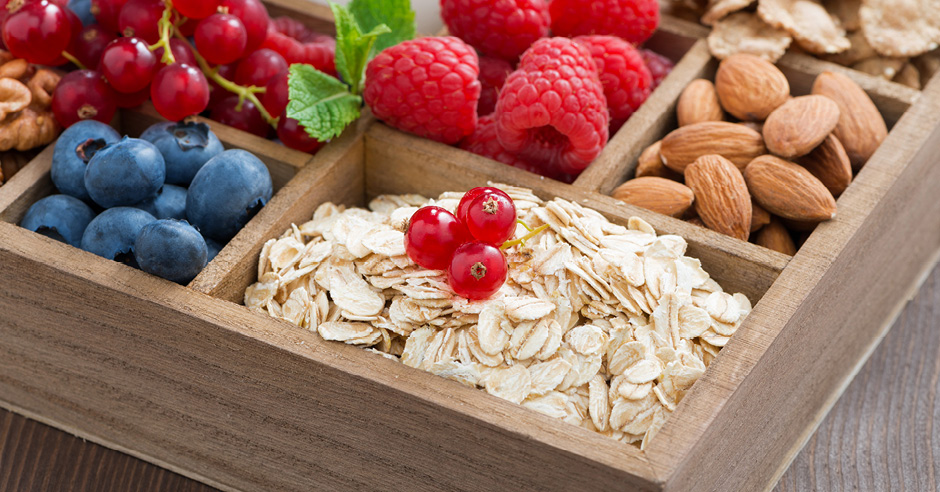Why Fiber Is Key for Losing Weight and Staying Healthy
It may not be a powerhouse of vitamins or minerals, but fiber has superpowers that help drive good health and weight loss. Here’s what a fiber-rich diet can do for you.
Help you manage your weight. Since fiber is not digested in the small intestine it passes through your digestive system either partially or completely unaltered. Eating high-fiber foods at meals and snacks delays digestion and so it helps you feel full longer. You’ll be less likely to get hungry between meals and overeat.
Reduce your risk of several diseases. Soluble fiber (which partially dissolves in water) is found in foods like oats, beans, nuts, barley, apples, and blueberries. It helps lower levels of LDL (“bad”) cholesterol and glucose (blood sugar), reducing your risk for heart disease and diabetes. Research also shows that insoluble fiber helps prevent diverticulitis, an inflammation of the intestine, and a recent study found a correlation between high-fiber intake during adolescence and young adulthood and a lower risk of breast cancer.
Support Bacteria in your Gut that Promote Good Health. For years, we’ve known that eating yogurt is important to maintaining beneficial bacteria in your intestines. Today, researchers are hot on the trail of discovering the many ways in which the human microbiome (all the microorganisms, bacteria and otherwise, that live in our bodies) impacts our health. Some studies suggest that a diet rich in fiber may help beneficial gut microorganisms to flourish, which in turn may prove to reduce risk for colon cancer, as well as metabolic and immune system conditions like type obesity, 2 diabetes, osteoarthritis and cardiovascular disease.
6 Fast Fiber Tips
Make it your goal to consume 20 to 35 grams of fiber a day. Curves Nutritionist Darcie Anderson offers this advice to help you reach that goal easily and effectively.
1. If your current diet includes very few high-fiber foods, increase your consumption gradually to avoid bloating or cramping that can come if you try to go from 0 to 35 grams in a day.
2. Drink plenty of water with high-fiber foods. It prevents constipation and helps you feel full, aiding weight management.
3. Think twice about peeling produce and then choose not to—the skin of fruits and veggies is rich in fiber and health-boosting vitamins and minerals.
4. To identify a whole-grain (aka high-fiber) food, check that the nutrition label lists whole grain as the first ingredient. When buying bread, for example, whole wheat flour is a whole grain but wheat flour is not.
5. Expand your whole grain horizons with some new options like quinoa, bulgar or amaranth to add new flavors and textures to your meals.
6. For a low-cal, high-fiber snack, serve popcorn made with a light sprinkling of salt and a smattering of olive oil instead of butter. Popcorn is a whole grain.
To find out more about how you can informed lifestyle and health choices, visit our blog under the ‘Live’ category! You can also learn more about how the Curves Circuit can benefit your lifestyle here.







